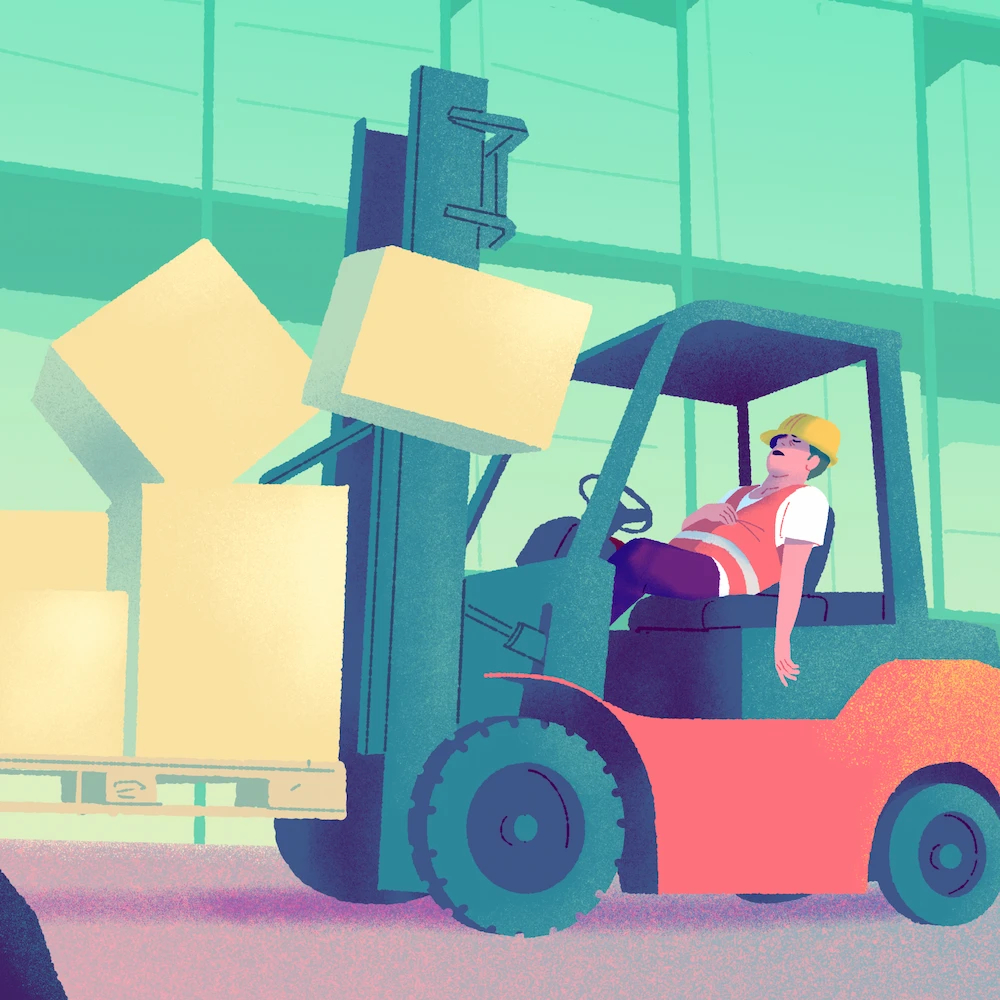Fluid communication between restaurant staff and their manager is key to smooth operations and a healthy work environment.
Conversely, a lack of communication at a restaurant can tarnish the customer experience and cause team members to disengage.
Did you know that a lack of communication is one of the leading reasons cited by employees for leaving their jobs? In an industry such as food services, where the turnover rate is often close to 75%, improving communication should be a priority for managers.
If you’re wondering how to do this, you’ve come to the right place. Here are 8 tips you can start applying at your restaurant.
1. Hold Team Meetings Before Meal Service
Everything always moves fast in a restaurant—which is why it is vital to hold a meeting before customers walk in the door, and to make sure each employee knows their role. You also want them to be aware of any other important information, such as changes to the menu.
A quick meeting before a busy evening or lunchtime is a great way to get your employees fired up for what lies ahead. It can also be a good opportunity to give everyone a friendly reminder to make sure that the service they deliver is up to your expectations.
If your establishment doesn’t operate on a meal-service basis, you can still hold short meetings between busy periods to motivate your employees or share key information.
⚠️ Note that these short meetings are no substitute for the more formal team meetings that remain essential in any workplace. The idea here is simply to try to communicate more frequently.
2. Use a Professional Communication Tool
Consolidating all your work communications in one place will save you an enormous amount of time and confusion, not to mention reducing misunderstandings with your employees.
Get equipped with a professional messaging platform to communicate directly with your employees. You’ll be able to share written and voice messages. Above all, avoid using social media—you want to respect their privacy and draw a clear line between work and personal life.
Many employee management software for restaurants also include a professional messaging feature that lets you centralize all your communications. Most solutions are available on mobile devices. Your employees can communicate with you directly on their smartphones.
Professional messaging tools usually allow you to see whether employees have checked their messages. This is a simple, effective way of making sure that all team members are up to speed.
💡 The next time you want to share some news with the entire team, you can simply post a message on your platform’s news feed. You’ll even see which of your employees have viewed the message!
3. Conduct Stay Interviews
Most restaurant managers meet individually with their employees on only two occasions: when hiring and firing. Don’t be that manager.
Stay interviews are an occasion for you to speak with your employees about what could be improved at your restaurant, or what’s working and should continue being done a certain way. They also show that you value your employees’ input, and help fuel their commitment and motivation.
During a stay interview, you can check in with your employee, answer questions, listen to feedback and suggestions, discuss any problems, ask about their career plans, and more.
👥 One-on-ones are also a good way of identifying troublesome situations before they escalate—so you can minimize conflicts at your restaurant.
4. Plan Team Lunches
Team lunches are commonly held in more upscale restaurants, but they can also be done in fast-food joints and cafes.
A team lunch is an informal get-together where you can share the latest company news with your employees and answer any questions they may have. While you’re at it, you can also do some team-building to foster cohesion and create a bond of trust between your employees.
Offering lunch is a great way to reward your team’s efforts and show your appreciation. You can even take the opportunity to have your staff try out new items on your menu.
This is also an important time for different teams to get to know each other. As a result, your service team will likely become more empathetic and appreciative of the work done in the kitchens, for example.
⚽ If team meals aren’t really a possibility at your restaurant, organize team-building activities outside working hours instead.
5. Use Employee Management Software
The management style at a restaurant can have a huge impact on the experience and well-being of employees. As such, it is essential to adopt management methods that help build a pleasant working atmosphere. Using workforce management software is a great way to eliminate misunderstandings and make HR management easier for your restaurant.
Scheduling apps also make it easy to manage schedules, track your employees’ working hours, communicate with everyone and consolidate all HR management in one place.
They are tailored to restaurants and their realities. For example, they make it easy to find replacements and allow employees to swap shifts. By using staff management software, you can offer your employees greater flexibility and avoid the frustration of misunderstandings.
📱 Some software packages also offer HR management tools to promote employee recognition, send anonymous surveys or even help with onboarding new recruits.
Not ready for software yet, but ready to improve your management practices? Visit our restaurant management templates page for free downloadable resources. Streamline employee scheduling, time tracking, labor costs management, hiring, onboarding, and more!
6. Focus On Training
Most mistakes and misunderstandings in a restaurant could be solved with more comprehensive employee training.
For example, make sure your team members know what to do when:
- Customers don’t show up for their reservations
- Customers are late for their reservations
- There’s a mistake in a customer’s order
- You’re short-staffed
- There was an error on a bill
- A customer is dissatisfied
- Etc.
All your team members should know their role and who to turn to if a problem arises. Make sure your employees know their responsibilities and can work autonomously.
Be sure to provide adequate training starting from onboarding and throughout employment, regardless of the employee’s position (waiter, cook, host, busboy, bartender, etc.).
And don’t hesitate to explain to your employees how to use the different work tools, from the POS system to your employee management software.
Don’t forget to digitize training documents so that employees can access them at any time—this includes your employee handbook, procedures, specialized training documents, FAQ, menus, etc.
📚 Make sure your employees have easy access to all these documents. For example, you can share them in the newsfeed of your employee management software.
7. Encourage Your Employees to Share Their Views
Provide your employees with a simple communication channel so that they can share their opinions openly. It’s your job to make it easy for them to communicate with you if they want to.
For example, you can send them satisfaction questionnaires on a regular basis. This way, they can leave you completely anonymous feedback.
Be there for your employees. Take the time to talk to them instead of barricading yourself in your office every chance you get.
✨ Your employees will feel much more comfortable sharing their opinions if you create a bond of trust. Take the time to get to know them, and don’t be afraid to help them out on the floor if the opportunity arises.
8. Clearly State Your Expectations
As a manager, you have a duty to express yourself clearly and transparently.
When you ask your team to carry out certain tasks, be precise in your wording. For example, explain how you want reservations to be taken by giving your team members a clear example to follow, or draw up a specific list of tasks to be done when closing up the restaurant.
You should also be mindful of your non-verbal language when speaking to your employees, otherwise you risk sending mixed messages.
📣 Ask your employees to communicate clearly with each other to avoid misunderstandings. Don’t hesitate to give them training to this end.
Make Workplace Communication a Priority
Good communication is crucial for your restaurant. It helps strengthen relationships between the members of your team, giving them all the information they need to do their jobs effectively.
Communication can also make a big difference in terms of the customer experience. For example, if all employees know the menu inside and out and are able to communicate effectively amongst themselves to fix problems, customers are sure to enjoy a better experience.
The work climate will also be much more pleasant, and employees will be happier.
As a manager, it’s your responsibility to keep communication at your restaurant both fluid and effective.











